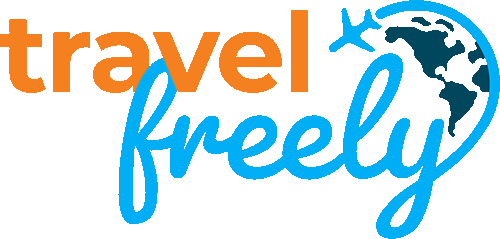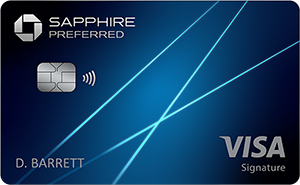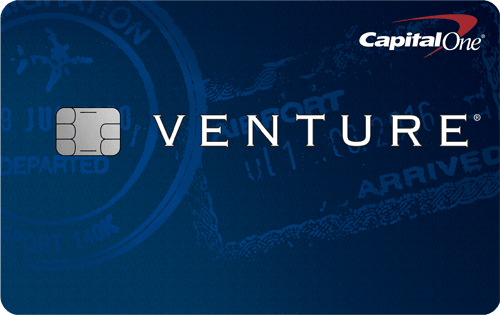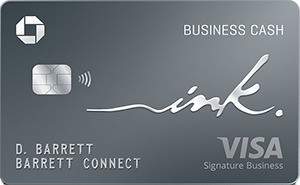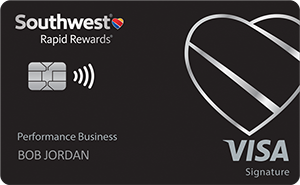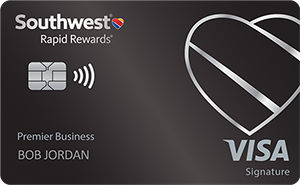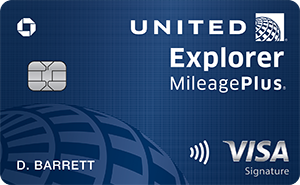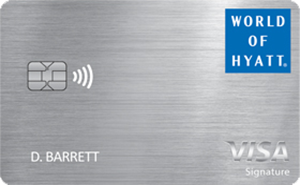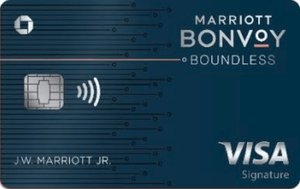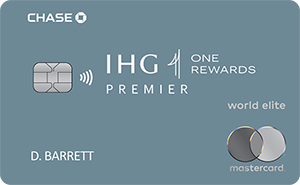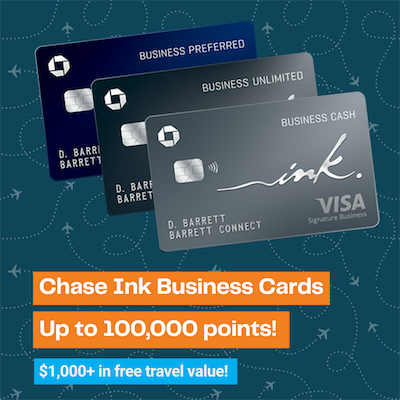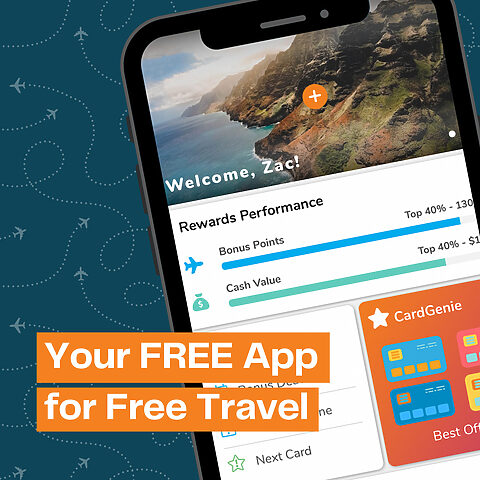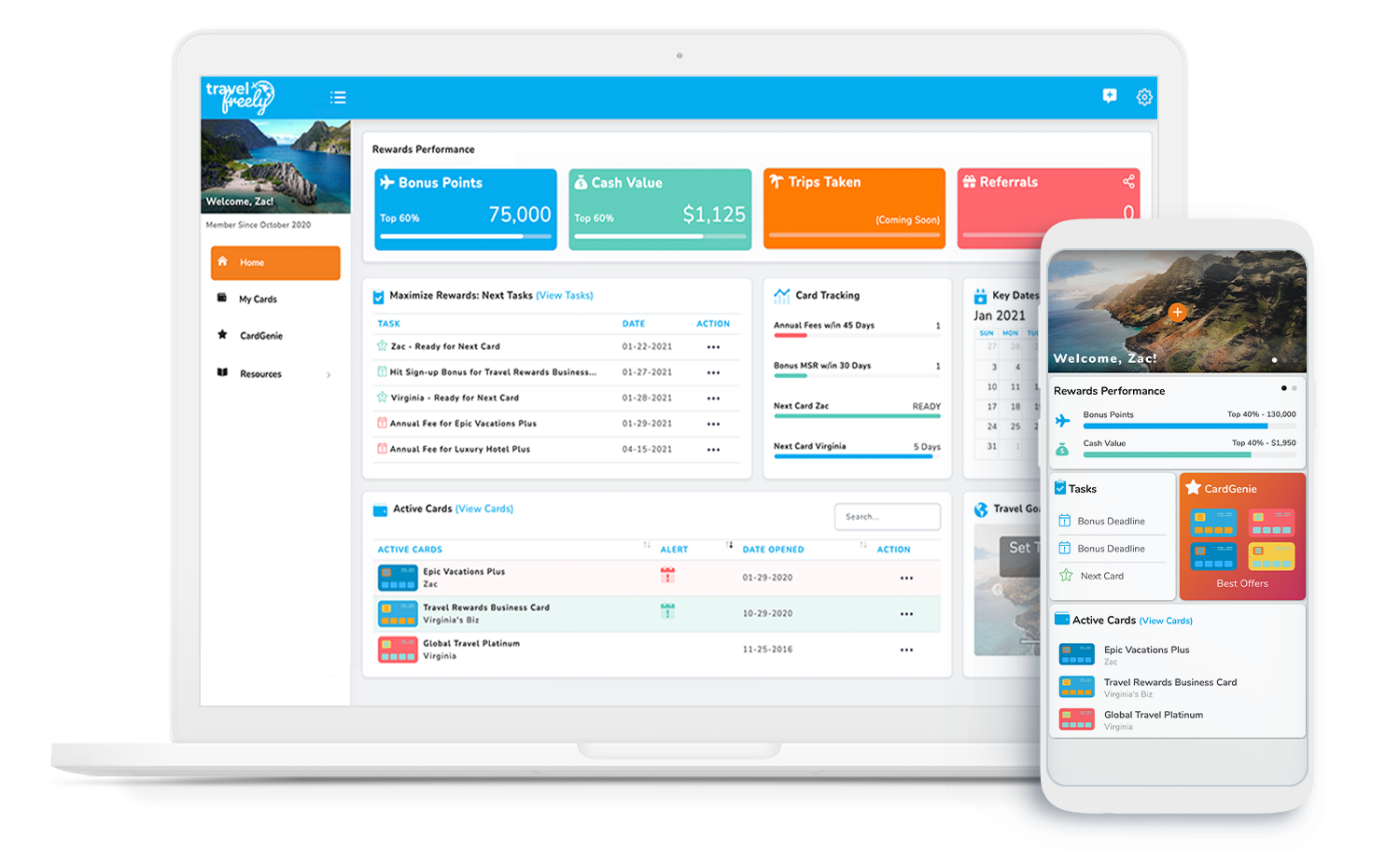This is part of a series of Beginner Card Plans for people getting started with free travel. The ones below are also available:
- Solo Beginner (no business) Credit Card Plan: 225,000+ points
- Couple Credit Card Plan: 600,000+ points
In this plan, I’m assuming a single person who has the ability to sign up for small-business cards.
Applying for Business Credit CardsTo apply for a business credit card, you need to have a business. However, lots of people have businesses and do not know it. If you sell stuff on Craigslist or eBay, for example, then you have a business. Similar examples include: consulting, coaching, writing, handyman services, owning rental property, renting on Airbnb, driving for Uber or Lyft, etc. In these cases, your business is considered a Sole Proprietorship unless you have officially registered your business. When you apply for a business credit card as a sole proprietor, you can use your own name as your business name, use your own address and phone as the business’ address and phone, and your social security number as the business’ Tax ID / EIN. Alternatively, you can get a proper Tax ID / EIN from the IRS for free, in about a minute, through this website. Can I put personal expenses on business cards? I know lots of people do this. Most business credit card applications say that you need to use the card only for business purposes only. It’s also important to know that some consumer credit card protections do not apply to business cards. So, steer clear if you don’t feel comfortable doing this. For step-by-step instructions on applying for a business card, go here. Go here to learn more about you being eligible for business credit cards. |
Beginner with business credit card plan: 400,000 points+ in 24 months ($5,000+ value)
Assumptions
This post is made for the following assumptions about the reader:
- Good credit score
- Hasn’t applied for any new credit cards in the past few years.
- Puts an average of $1,500 per month on credit cards
- Has a business
- Relationship status: single
- Travels mostly domestically, but would like to do more. Would also like to travel internationally a couple of times per year.
- Wants a simple approach to earning and spending rewards.
- Has never had any of these cards before
Given the above, here are a current credit card signup offers for a plan…
Plan overview
The easiest and quickest way to amass points and miles is through credit card signup bonuses. Despite common beliefs, this won’t hurt your credit score long term as long as you pay your credit card bills in full each month. Also, avoid charging near your limit so your credit utilization is low relative to the amount of your available credit. In fact, many people see their credit score increase a few months after starting to sign up for multiple cards.
When you get started, if all goes well you’ll earn lots of rewards and your credit score will go up a bit (or remain relatively stable). On the other hand, once you’ve signed up for a bunch of cards, it will be harder to get approved for new cards from certain banks. Chase, in particular, has the dreaded 5/24 Rule. If you have opened 5 or more personal cards in the past 24 months, from any bank, Chase won’t approve you for any more cards. However, Chase business credit cards do not count towards your 5/24 total. Note: When you sign up for Travel Freely, there is a 5/24 counter on the card dashboard.
For that reason, anyone considering signing up for a bunch of credit cards should think seriously about starting with Chase. Chase has quite a few outstanding cards and it would be a shame to lose your ability to get those cards due to signing up for cards first from other banks.
With all this said, the plan below focuses on obtaining the Chase Sapphire Preferred card first, then the Chase Ink Business Preferred, then the Capital One Venture Rewards Credit Card, and a number of “must-have” Chase cards:
- Sapphire Preferred: Earn 2X Ultimate Rewards points for travel & dining. Points worth 1.25 cents each towards travel. Points are transferable to a number of airline and hotel programs, including Southwest, United, and Hyatt. There is a premium version of the Sapphire card called the Chase Sapphire Reserve. However, it comes with a $450 annual fee. Check out Preferred vs. Reserve article to compare.
- Ink Business Preferred: Earn 3X Ultimate Rewards points for travel, shipping, internet, cable, phone, and advertising with social media sites (up to $150K spend per year).
- Capital One Venture Rewards Credit Card: Great card overall for solid rewards for all spend, plus the ability to transfer rewards to airline miles.
- Ink Business Cash: Earn 5X Ultimate Rewards points at office supplies and 5X cellular/landline/cable (on up to $25,000 in total purchases in 5x categories annually); and 2X gas and restaurants.
- Southwest Rapid Rewards Performance Business Credit Card and Chase Southwest Airlines Rapid Rewards Premier Business Credit Card: Both tend to have excellent signup bonuses. Chase does not prohibit applicants from getting both business cards the way they do with Southwest personal cards. As a result, it can be easy to earn the Southwest Companion Pass so that you can add a companion to all of your Southwest flights for free while the pass is active. Once you earn the Companion Pass, the pass will be active for the rest of that calendar year and all of the next! The best bet is to sign up for these cards in December or January so that points post to your account as soon as possible in the new year. Here’s a full strategy on the Southwest Companion Pass and why timing is so important.
- United Explorer: considered as a “must-have” Chase card because it can be downgraded after a year to a no-fee United card which preserves this card’s best two features: a) Improved economy saver award availability, which makes it much easier to book international awards with United miles since it opens up space between airports domestically. And b) Last seat standard economy award availability. This feature is great for those occasions when you are stuck with no good way to get from one place to the other.
- World of Hyatt: Keep for the annual free night certificate. Consider spending $15K per year for a second certificate, especially if you pursue Hyatt status since you’ll earn 2 elite qualifying nights with each $5K spend.
Also note that Chase offers cards from three hotel chains: Hyatt, IHG, and Marriott. Keep in mind that Amex also offers a Marriott card, so once you are over 5/24 it’s still possible to pick up a new Marriott card (the Amex version), but not an IHG or Hyatt card.
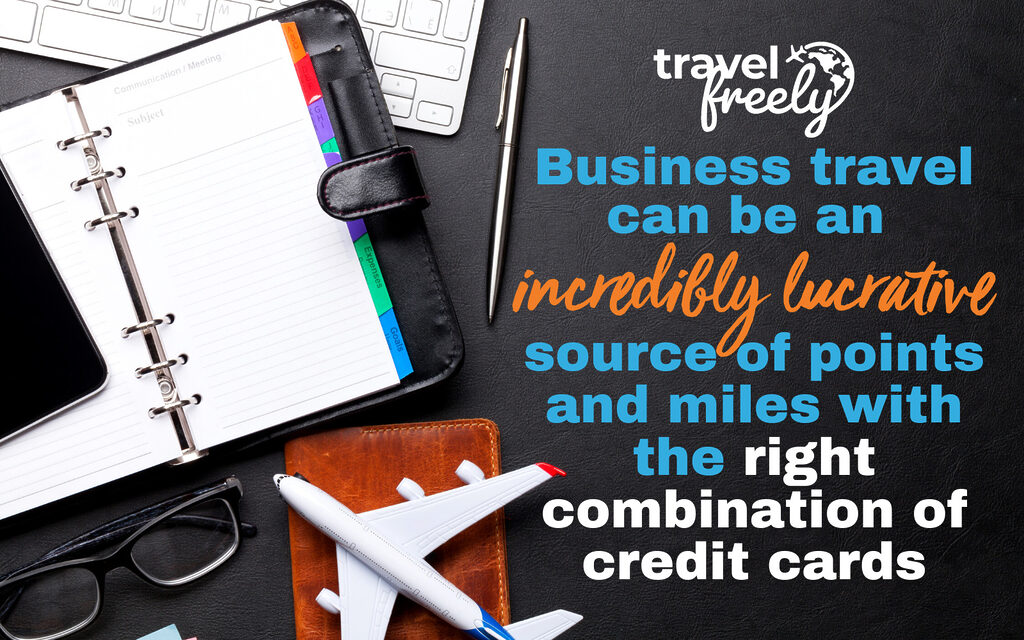
How much spend?
Most credit card offers require meeting spend requirements in order to earn a signup bonus. And, in most cases, 3 months is the magical amount of time you have to meet those requirements. So, let’s look at how much spend our fictional person can achieve in three months:
Since our fictional person spends $1500 per month on credit cards, he/she already spends $4500 every 3 months. Additionally, he/she could spend another $1500 per month via credit card by using a bill payment service like Plastiq to pay rent (please see this post for details). Plastiq would charge $37.50 in fees (2.5%) for each $1500 bill payment. That fee can be well worth it in order to qualify for signup bonuses. Altogether, it’s possible for our fictional newbie to spend $9000 every 3 months.
Preparation
Before signing up for any new cards, make sure you sign up for Travel Freely (it’s free). This is our free web-based tool that walks you through the process of signing up for cards to earn big bonuses. The tool keeps track of your cards including your 5/24 status, alerts you when time is running out to complete minimum spend, alerts you when annual fees are nearly due, and much more. Best of all, it’s free. =)
First Card
Chase Sapphire Preferred (Learn More)
The Sapphire Preferred is Travel Freely’s #1 rated card for beginners. It earns Chase Ultimate Rewards that are have high value and flexibility. You can redeem points easily in the Chase Travel℠ Portal or transfer to many well known hotel and airline transfer partners (including Southwest, United, Marriott, and Hyatt). Here’s more about why we like this card and a Comprehensive Guide to Chase Ultimate Rewards.
The following display shows the current Sapphire Preferred offer at the time you read this on the web:
Second Card
Apply for this one 91 days after the last set card. If you’re using Travel Freely, you’ll get an email reminder that you’re ready to apply for new cards. Waiting 91 days is best so that the small hit to your credit report caused by the first card should have largely dissipated. In fact, it is common to find that your credit score is higher by this point than it was when you began.
Chase Ink Business Preferred (Learn More)
This has an incredible signup bonus that you won’t be able to get once you’re over 5/24 so it’s definitely worth getting as soon as possible. There is a first year annual fee, but you can downgrade this card after the first year to the no-fee Ink Business Unlimited (1.5X everywhere) or to a second Ink Cash card (in case the $25K cap on 5X spend is too limiting).
Third Card
Apply for this one 91 days after the last card. If you’re using Travel Freely, you’ll get an email reminder that you’re ready to apply for new cards.
Capital One Venture Rewards Credit Card (Learn More)
The Capital One Venture Rewards Credit Card is particularly good for those starting out with credit card rewards. This card earns 2X everywhere, and points (they call them “miles”) are very easy to redeem. Simply charge travel to your card and then you can use “miles” to reimburse yourself for those statement charges at a value of 1 cent each. As you get more advanced, you can alternatively transfer points to airline partners. If you know what you’re doing, this can lead to far more value from your points. Here’s more about why we like this card and a Comprehensive Guide to Capital One Miles.
The following display shows the current Capital One Venture Credit Card offer at the time you read this on the web:
Best "easy to use" starter card (or complement to the Chase Sapphire Preferred) for those who don't want to think when it comes to earning and redeeming miles.
Note: Capital One can be hard on approvals for those who have opened many new personal accounts. Even if you do have an excellent credit score, you can sometimes be denied.
Fourth Card
Apply for this one 91 days after the last card. If you’re using Travel Freely, you’ll get an email reminder that you’re ready to apply for new cards.
Chase Ink Business Cash (Learn More)
Some are a huge fan of this card. Plus, there is no annual fee.
Great signup bonus for a business card with no annual fee, now with an extended timeline for hitting the spend requirement. Great for carrying a balance. 5x earning categories, and if paired with a premier Chase credit card (one that carries an annual fee), your points are worth even more.
Fifth and Sixth Card
Apply for this one 91 days after the last card. If you’re using Travel Freely, you’ll get an email reminder that you’re ready to apply for new cards.
Chase Southwest Airlines Rapid Rewards Performance Business Card (Learn More)
Highest bonus amongst the Southwest business cards. You are eligible even if you have the Southwest Premier Business card. Great to combine with personal card to earn the Southwest Companion Pass.
Apply for this one 91 days after the last card. If you’re using Travel Freely, you’ll get an email reminder that you’re ready to apply for new cards.
Chase Southwest Airlines Rapid Rewards Premier Business Card (Learn More)
Great Southwest business credit card with a low annual fee. Card offers two free Early Bird Check-Ins each year and the points earned from the signup bonus count towards the Companion Pass.
Seventh Card
Apply for this one 91 days after the last card. If you’re using Travel Freely, you’ll get an email reminder that you’re ready to apply for new cards.
Chase United Explorer Card (Learn More)
This card’s sign-up bonus can fluctuate based on the time of year. It could be good to skip this card and move on to the Southwest card if the offer is low. A low sign-up bonus for the United Explorer card is 30,000 – 40,000 miles and high is 50,000 – 60,000 miles.
The following display shows the current United Explorer card offer at the time you read this on the web:
A great choice for United fans with an increased signup bonus. You'll also get access to United saver level economy awards, free first checked bag and priority boarding.
Eighth Card
Hotel Card: World of Hyatt, Bonvoy Boundless, or IHG Premier (Learn More)
My favorite here is the World of Hyatt, but make sure you factor in your hotel brand preferences. Each card comes with a free annual night on renewal of your annual fee, which is a value that justifies keeping the card long-term.Keep in mind that Amex also offers a Marriott card, so once you are over 5/24 it’s still possible to pick up a new Marriott card (the Amex version), but not an IHG or Hyatt card.
The following display shows the current offers at the time you read this on the web:
This is a two-tiered signup bonus with the first bonus being 30,000 points earned after spending $3,000 on the card within the first 3 months. The second bonus offer is dependent on how much you spend, where you'll earn 2x points per dollar spent in the first 6 months (on purchases that normally earn 1x point), on up to $15,000 spent.
With this unique offer, you'll earn 3 free night awards (up to 50,000 points per night). The free nights expire 12 months after they are earned. This is a solid card from Marriott, plus there are many benefits, such as the annual free night certificate you receive on each account anniversary.
This card is sometimes overlooked due to other larger hotel programs. It can be valuable if you'll use the annual free night stay and fourth night free when booking award stays.
Add it all up

Assuming success at getting approved for all of the above cards, average sign-up bonus offers, and that all spend requirements have been met, in total we’re looking at over 400,000+ points and miles worth of sign-up bonus points (not counting points additionally earned from spend). A rough estimate would put that amount of rewards at over $5,000 in free travel!
Slow and Steady is the Simplest Way to Travel Freely
Jumping into the world of credit cards and sign-up bonuses can be intimidating to some people, especially those who are brand new to free travel and are a bit suspicious. Nothing in life can be free, right? Well, this is one of those rare cases because so many other people carry a balance on their cards. The banks are fine with giving away big bonuses because a large amount of people end up paying enormous fees in interest (and they still charge merchants 2-3% on every swipe!).
Confused? Here’s a Simple 1-2-3 Plan for a Beginner
Travel Freely Members average $500+ in free travel with their first card bonus. Business owners average $800. You can be booking your free travel in as little as 3-4 months.
First of all, Sign up for Travel Freely (for free) to access the Get Started Guide.
1. APPLY – Get ONE great card from your CardGenie Recommendations.
2. EARN – Put all your regular spending on the card and hit your bonus.
3. TRAVEL – Use our Resources page and free guides to book your first free travel!
Just want a list of the best cards? Here are our best monthly offers and our list of overall card recommendations.
